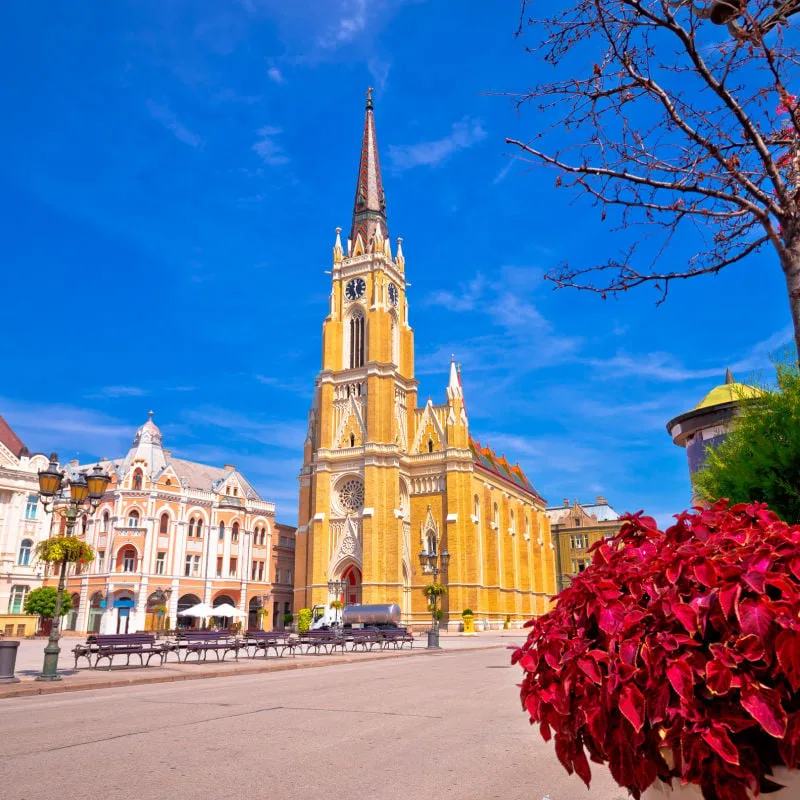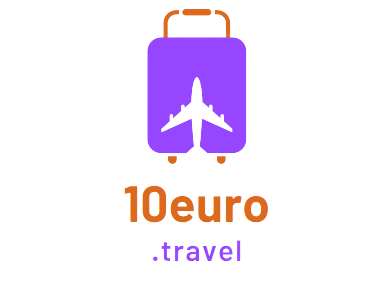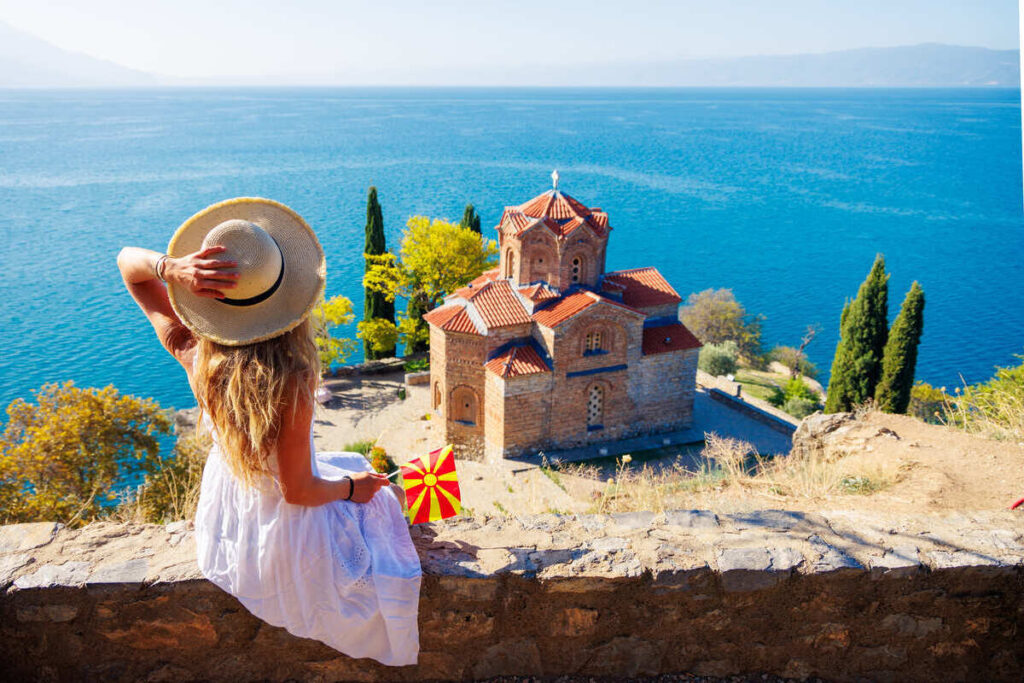No products in the cart.
Travel Guide
Why This Gorgeous European Region Will Become A Digital Nomad Hotspot For 2024
Last Updated
Europe is every digital nomad’s go-to destination for sampling culture and country-hopping over a short period of time.
A well-connected continent, home to nations that are smaller than medium-size U.S. states, it is easy and convenient to explore, largely thanks to the Schengen Area, a passport-free zone encompassing 27 (soon to be 29) European countries.

Schengen has all but eliminated routine passport checks across most of Europe, making traveling across borders completely hassle-free.
On the downside, non-European travelers can only be present in the Schengen Area for 90 days out of any 180-day period, which means any calendar day spent in any participating country means a day less in another.
A curse and a blessing, Schengen has eased travel curbs but severely limited a nomad’s options for long-term stays in the Old Continent, especially now that two more countries are joining.

Where, then, can nomads go to extend their time in Europe? Thankfully, one of the continent’s most gorgeous regions is entirely outside the Schengen Area, and all countries are welcoming medium to long-term residents with open arms:
Europe’s Top Nomad Hotspot Is Not In Schengen
The Western Balkans are located in Southeastern Europe, surrounded by EU (European Union) and Schengen signatory states, such as Croatia and Greece, but that have not yet been accepted in either.

They are deemed Europe’s less developed region, largely due to their previous history of communism and having had their EU accession process delayed for decades, but this does not mean they are not safe nor lacking in terms of culture.
Far from that.
The Western Balkans (WB) are comprised of the following:
- Albania
- Bosnia and Herzegovina
- Montenegro
- North Macedonia
- Serbia
*The disputed territory of Kosovo, a partially-recognized country Serbia claims as an autonomous region part of its own.

As they are not EU members, they tend to be ignored by visitors to the continent, particularly Americans, who associate Europe exclusively with wide Parisian boulevards, the interconnected islets of Venice, and unfinished Spanish basilicas.
They won’t find those in the underdeveloped WB, but they may have a different version of the things that make Europe great, and that makes them fascinating in their own right.
‘But where do digital nomads come into play‘, you may be wondering?
Why Will The Western Balkans Become Europe’s Next Nomad Haven?

First of all, seeing the WB are not in Schengen, they can stay for 90 days in each, and in the case of Albania, American citizens in particular are granted a one-year stay visa-free.
Then, there is the fact that all six WB destinations are shockingly cheap to live in: they are not in the Eurozone*, their national currencies are typically weaker than the U.S. dollar, and prices for food and the overall cost of living are a lot lower compared to their EU counterparts.
*Montenegro has unofficially adopted the Euro as its currency, but this has not been approved by the European Union, as it is not a member state

Let’s talk prices and tourist offers.
Albania
Gorgeous Coastline And Ancient History
According to Nomad List, it costs just under $2,000 to live in Albania, where a sumptuous three-course meal at a mid-range restaurant will set you back by a mere $15, maybe, and month-long rental agreements can be signed from $300.
As one of our writers has described, Albania is essentially Greece on a budget, as they are neighboring countries and the culture and nature are similar, except Airbnb rates are not hiked, and the cobbled medieval towns and Adriatic beaches are not as packed with foreign tourists.

The two top nomad destinations in Albania are Tirana, a modern capital city famous for having an abundance of quirky cafes and vast green spaces, and Ksamil, a laid-back coastal town within walking distance of white-sand beaches.
As noted above, Americans can stay an entire year as tourists in Albania, a privilege not extended to European nationals themselves, so you should consider that when planning a long-term relocation across the pond.

Bosnia And Herzegovina
Landmark Bridges And Friendly Locals
Elsewhere in Bosnia and Herzegovina, commonly shortened to BiH, American nomads are often surprised at how friendly and open-hearted locals are, unlike in Italy, France, or other Western countries, where they tend to find people are generally dismissive of them.
In Bosnia, you should definitely not shy away from accepting a rakija invitation nor be taken aback by the kindness of strangers: with Bosnia’s less-than-impressive visitor numbers, locals are always keen on welcoming travelers and making them feel right at home.

Basing yourself in BiH, you will be expected to budget between $1,164 to $2,173 per month, depending on where you’ll be living. Life in larger urban centers is typically more expensive, but you should bear in mind ‘expensive’ in Bosnia equals ‘cheap’ in an average U.S. city.
Tourist hotspots like Sarajevo, the Bosnian capital, home to the infamous Latin Bridge, where the murder of a Duke took place, essentially triggering World War II and a sprawling Ottoman-style bazaar, and Mostar, where what’s possibly the most famous bridge in Europe is located, are the best-rated destinations for the availability of work-friendly cafes and tourism infrastructure.

Montenegro
Laid-Back Coastal Towns And Dalmatian Culture
Next up on the list is Montenegro, a tiny Adriatic nation sandwiched between Albania and Croatia and bordered by Bosnia and Serbia. Out of the non-EU European states, it is often dubbed the most developed due to the higher quality of life it offers and its upper-middle-income economy.
It is also the one closest to joining the EU in the near future, so now is the time to visit before it inches closer to accessing the associated Schengen Area. With Montenegro’s stone-built Dalmatian towns and pristine coastline, you will want to spend 90 full days here while you still can.

For beach enthusiasts, the ancient port of Budva is the place to be, as it is surrounded by a turquoise-colored sea, and staying in the fortified part of town, it’s a short half-hour walk to unspoiled, peaceful pebbly beaches.
Culture buffs may prefer Kotor instead. Nicknamed Dubrovnik’s small sister, it is a perfectly preserved medieval settlement surrounded by walls, nestling on the shores of the Bay of Kotor, an area of outstanding natural beauty.

It costs on average $2,241 per month to live in Montenegro as a digital nomad, making it the costliest option out of all WB countries – but again, two thousand bucks a month is unlikely to discourage you from relocating to Montenegro as an American.
North Macedonia
Peaceful Lakes And Byzantine Churches
One of Europe’s least-visited countries, North Macedonia (N.M.) has struggled to make a name for itself in the tourism scene since detaching from the now-defunct Yugoslavia, but it’s certainly gaining ground as a workcation hub.

It may not have access to the Adriatic nor be as highly developed as you would expect a European country to be, but it has no shortage of stunning landmarks, from centuries-old Byzantine churches perched on cliffs facing serene lakes to cityscapes dominated by historic citadels.
Staying in N.M. for three months as you wait for your Schengen clock to reset? You might want to add Skopje, the eclectic Macedonian capital, birthplace of Mother Teresa and the country’s financial center, to your list, but also Ohrid, a charming lakeside town on the border with Albania.

In terms of affordability, N.M. is easily the most appealing destination for remote workers on the Western Balkan route, as it costs a mere $1,307, all expenses included, such as accommodation and food, to call it home for a month.
Serbia
The Landlocked Cultural Hotspot
The landlocked gem that was once at the center of Yugoslavia, Serbia is the only WB country to host nonstop flights from America, and it’s not somewhere you want to use merely as a transit hub on your way to the Balkan coast.

Serbia is becoming increasingly popular for its exciting nightlife, which rivals that of Amsterdam and Berlin, and rich history, spanning at least two millennia and several different eras, including Roman, Byzantine, Ottoman, and of course, communist rule in the 20th century.
Today, Serbia is a free, democratic country that’s swinging West and towards the European Union, but while it is not yet a member, it welcomes American tourists for three consecutive months, irrespective of where they have been in the previous half-year.

As the capital and largest city, Belgrade is the best place for nomads to be, thanks to its Bohemian scene and cafe culture, but the enchanting Novi Sad, with its traditional Old Town, and Niš, with its landmark castle and Roman heritage, are not to be missed either.
Staying a single month in Serbia, your expenses should total $2,547 in a worst-case scenario or an even cheaper $1,580: it all boils down to which city you’re picking as base (Belgrade is costlier for expats) and your preferred level of comfort while traveling.
The Bonus Country… Or Is It?
Last but not least, you have an intriguing Kosovo as a Schengen alternative. A disputed territory that was part of Serbia up until 2007 and still claimed by the latter, it is an ethnically Albanian nation bounded by the Accursed Mountains and the Kosovo Plain.

It is widely known for its wild nature and Ottoman heritage, but nomads love it best for its delectable cuisine and tourist-free, picturesque towns. One of those, Prizren, looks cropped out of a fairytale book, with its winding alleys and meandering river running through a minaret-dotted center.
Kosovo can be cheap to live in, but you should know that much like Montenegro, they have unilaterally adopted the Euro, meaning they are not members of the European Union yet and thus cannot have it as currency, but do anyway.

As a result, prices can be somewhat higher, with the cost of living ranging from $1,212 to $2,285, but it’s worth noting Kosovo remains remarkably affordable by Western standards. As an American nomad, you can stay 90 days in the tiny country while they’re yet to ascend to Schengen.
You should know Kosovo and Serbia are yet to normalize relations following independence, and Serbian border officers may deny you entry into Serbia if you first arrive in Kosovo without passing through their country first, so bear that in mind when planning a cross-country Balkan trip.
Schengen Is Growing Larger Every Year

From March, two of the most popular non-Schengen countries, Bulgaria and Romania, will ascend to the Schengen Area, restricting long-term options for nomads even further.
Up until now, these two Eastern Balkan states have been used by digital nomads as ‘reset’ destinations, where they would commonly stay 90 days, independently of time spent in Schengen, while waiting to be re-admitted.
That is because Bulgaria and Romania applied their own immigration rules and granted tourists 90 days each, regardless of visits to other European destinations. This changes from March, once they start adopting the Schengen acquis.

In other words, if spending 60 days in Bulgaria or Romania collectively, they will only have 40 days left to use up elsewhere in Schengen, a vast territory that includes Spain, France, Italy, Croatia, Switzerland, and more.
Similarly, any days spent in the aforementioned countries will have an impact on how much time you have left in Bulgaria or Romania, dealing a major blow to digital nomads and slow travelers.
Any time spent in any Schengen country, even if it’s multiple countries in a single itinerary, counts towards the 90-day limit. Once that is reached, a traveler must exit the zone, and they are not allowed to return to any signatory country for an additional 90 days.

With 27 countries currently participating in the Schengen Area area and applying this common policy, and two more set to join later this year, you can see how digital nomads aren’t exactly thrilled Schengen is growing larger and larger.
Well, there is always the Western Balkans, one of Europe’s most beautiful yet hugely underrated regions, and where not a single country has embodied the Schengen criteria – and if you’re asking us, it is set to become the continent’s next digital nomad haven.

With that being said, every single one of the Western Balkan countries is aspiring to become full EU and Schengen members in the future, and you shouldn’t count on this loophole to exist in the next years.
Other non-Schengen states that are not in the Western Balkan region include Moldova, a small post-USSR Eastern European country between Ukraine and Romania; the United Kingdom, where Americans can stay for a full 180 days upon each entry; Ireland (an EU member with a Schengen opt-out), and Cyprus (yet another EU country that is yet to fulfill the criteria for Schengen accession).
Read More:
Top 5 Travel Insurance Plans Starting At $10 Per Week
How To Easily Earn Points For Free Travel
↓ Join Our Community ↓
The Travel Off Path Community FB group has all the latest reopening news, conversations, and Q&A’s happening daily!

SUBSCRIBE TO OUR LATEST POSTS
Enter your email address to subscribe to Travel Off Path’s latest breaking travel news, straight to your inbox.
This article originally appeared on TravelOffPath.com
Source link

